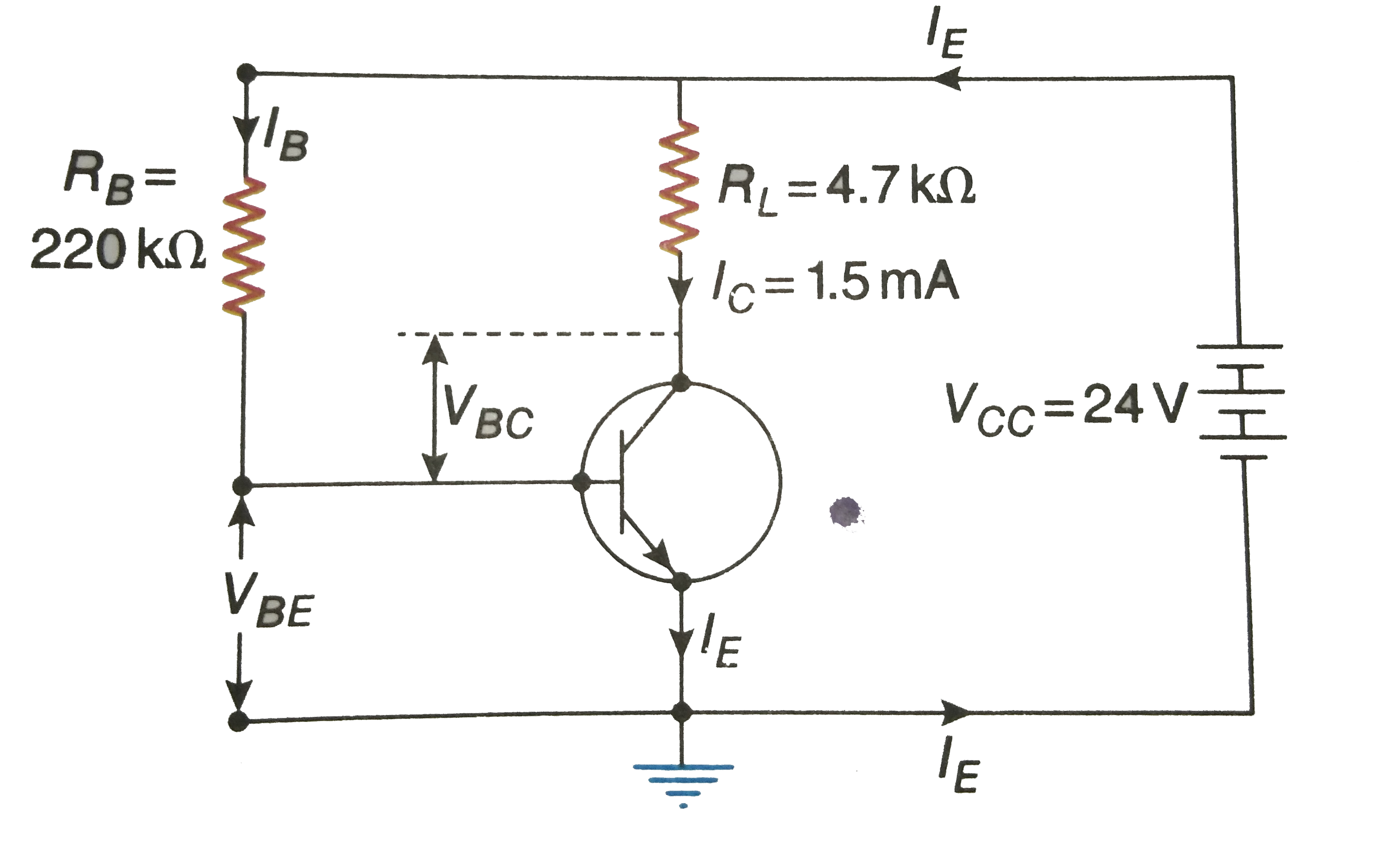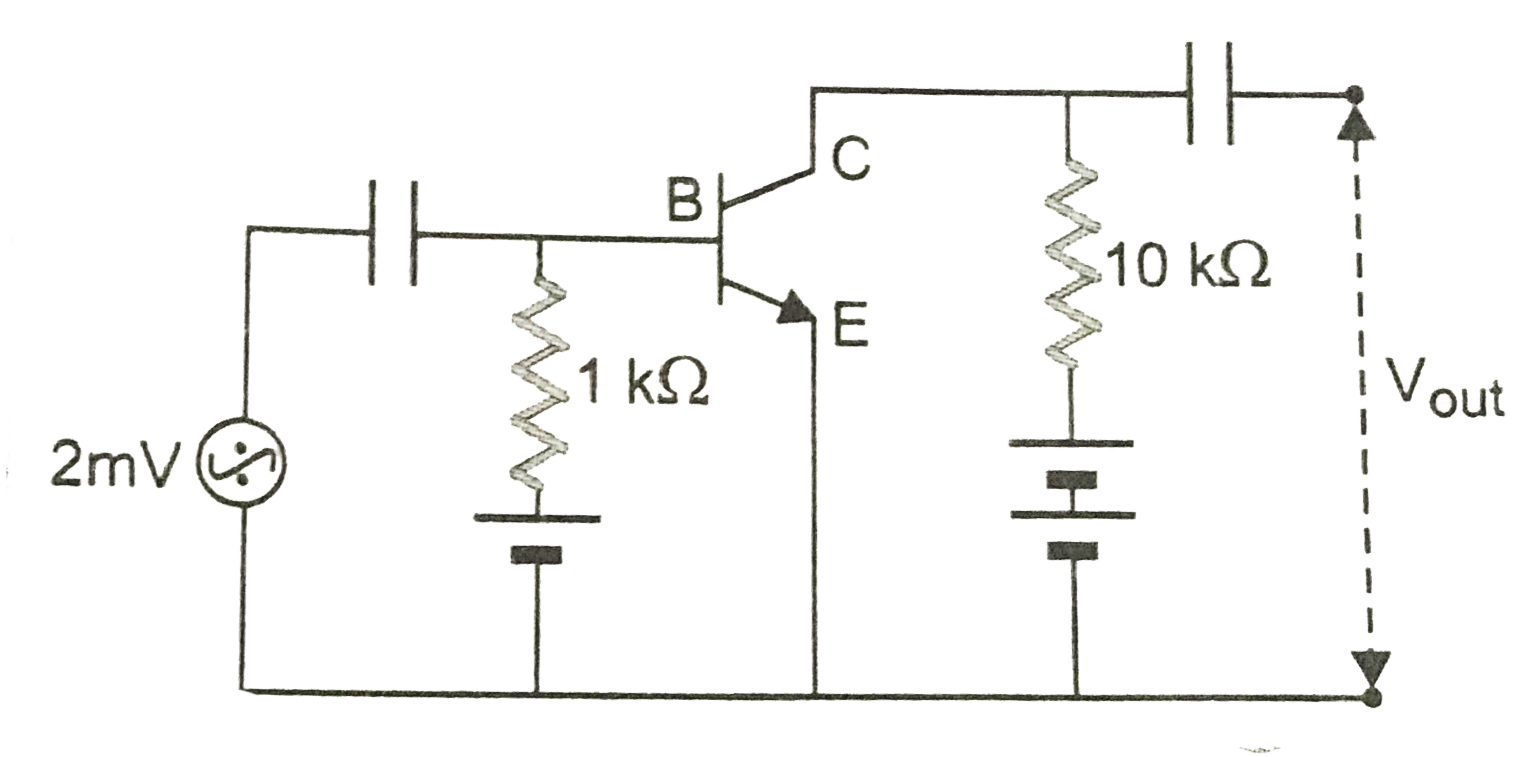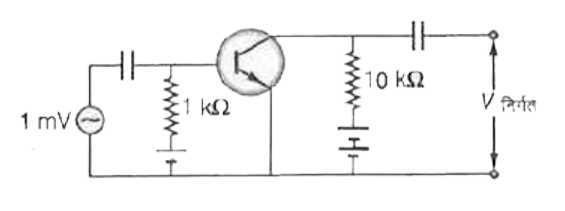A common-emitter amplifier circuit is shown in the figure below. For the transistor used in the circuit the current amplification factor, βdc = 100. other parameters are mentioned in the figure.
We find that
 Solution in Bengali
Solution in Bengali
VBE=+18.2 V, VBC=−3.45V and amplifier is working
VBE=+18.5 V, VBC=+2.85V and amplifier is not working
VBE=+20.7 V, VBC=+3.75V and amplifier is not working
VBE=+21.5V, VBC=−2.75V and amplifier is working
Step by step video & image solution for A common-emitter amplifier circuit is shown in the figure below. For the transistor used in the circuit the current amplification factor, beta_(dc) = 100. other parameters are mentioned in the figure. We find that by Physics experts to help you in doubts & scoring excellent marks in Class 12 exams.
Topper's Solved these Questions
- BOOK - CHHAYA PUBLICATIONCHAPTER - QUESTION PAPER OF NEET 2017EXERCISE - QUESTION PAPERS OF (JEE MAIN) (2017)28videos
QUESTION PAPER OF NEET 2017
- BOOK - CHHAYA PUBLICATIONCHAPTER - QUANTUM THEORYEXERCISE - CBSE Scanner29videos
QUANTUM THEORY
- BOOK - CHHAYA PUBLICATIONCHAPTER - QUESTION PAPER OF NEET 2018EXERCISE - QUESTIONS58videos
QUESTION PAPER OF NEET 2018
Similar Questions
A man grows into a giant such that his linear dimensions increase by a factor of 9. Assuming that his density remains same, the stress in the leg will change by a factor of
01:34View SolutionDefine the terms (i) 'cut-off voltage' and (ii) 'threshold frequency' in relation to phenomenon of photoelecric effect.
Using Einstein's photoelectric equation show how the cutt-off voltage and threshold frequency for a given photosensitive material can be determined with the help of a suitable plot/graph.02:42View SolutionIt is found that if a neutron suffers an elastic collinear collision with deuterium at rest, fractional loss of its energy is pd, while for its similar collision with carbon nucleus at rest, fractional loss of energy is pc. The values of pd and pc are respectively
01:41View SolutionThe current amplification of the common base NPN transistor is 0.96 . What is the current gain if it is used as common emitter amplifier?
01:40View SolutionIn the common emitter amplifier circuit, Fig. an npn transistor with output voltage of the amplifier as 1 V, the current gain of transistor amplifier is :
 04:14View Solution
04:14View SolutionThe current amplification factor α of a common base transistor and the current amplification factor βof a common emitter transistor are not related by
01:54View Solutionउभयनिष्ठ-उत्सर्जक (CE ) प्रवर्धक के रूप में प्रयुक्त ट्रांजिस्टर को परिपथ चित्र द्वारा प्रदर्शित कीजिए। इसके धारा लाभ तथा वोल्टेज लाभ का सूत्र प्राप्त कीजिए।
02:16View SolutionIn common base circuit of a transistor , current amplification factor is 0.95 . Calculate the emitter current , if base current is 0.2 mA
03:21View Solutionजब एक ट्रांजिस्टर प्रवर्धक उभयनिष्ठ आधार परिपथ में प्रयुक्त किया जाता है, तो धारा प्रवर्धन 0.987 है। यदि उसे उभयनिष्ठ उत्सर्जक परिपथ में प्रयुक्त किया जाये, तो धारा प्रवर्धन क्या होगा?
02:19View SolutionThe current amplification of common base N-P-N transistor is 0.96. What will be the current gain if it is used as common emitter amplifier ?
04:12View Solutionएक उभयनिष्ट उत्सर्जक प्रवर्धक (common emitter amplifier), में β=62, निर्गत परिपथ प्रतिरोध (output circuit resistance) =5000Ω और ट्रांजिस्टर का आंतरिक प्रतिरोध 500Ω है| वोल्टेज प्रवर्धन एवं शक्ति प्रवर्धन (power amplification) ज्ञात किजिए|
03:01View SolutionIn a common - base circuit of transistor , current amplification factor is 0.95 Calculate the emitter current , if base current is 0.2 mA :
03:04View SolutionThe current gain of a common emitter transiter circuit shown in figure is
 . Draw the dc load line and mark the Q point on it .04:43View Solution
. Draw the dc load line and mark the Q point on it .04:43View Solutionदिए गए परिपथ में n-p-n ट्रांजिस्टर उभयनिष्ठ-उत्सर्जक के रूप में जुड़ा है, जिसकी धारा लब्धि β=100 है, तो प्रवर्धक का निर्गत वोल्टेज होगा
 View Solution
View SolutionThe current amplification factor α of a common base transistor and the current amplification factor βof a common emitter transistor are not related by
01:48View SolutionDraw the circuit diagram of a common emitter n-p-n transistor as an amplifier. Would you prefer to use a transistor as a common base or a common emitter amplifer and why?
02:40View Solution

